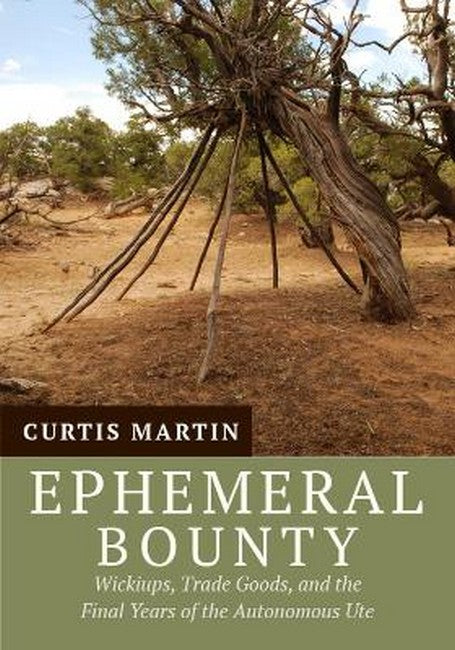Curtis Martin is a research archaeologist for Grand River Institute and Dominquez Archaeological Research Group, Inc., both in Grand Junction, Colorado. He is the Principal Investigator for the Colorado Wickiup Project, which received the 2014 Governor's Award in recognition of the project.
Request Academic Copy
Please copy the ISBN for submitting review copy form
Description
List of Figures List of Tables Acknowledgments Prologue 1. The Colorado Wickiup Project: Investigation of the Rarest and Most Fragile of Native American Sites 2. A Safer World in Woods Embraced: Ute Origins and Culture History 3. Ephemeral Bounty: The Golden Years of the Protohistoric Era 4. Gimme Shelter: Aboriginal Wooden Features 5. Field Methodology for Expedient Wooden Feature Sites 6. Dating Aboriginal Wooden Features 7. The Decker Big Tank Wickiup Village 8. The Pisgah Wickiup Village 9. The Ute Hunters' Camp 10. Disappointment Draw Lodge 11. Musick Lodge 12. The Tea House Wickiup 13. Future Directions and Proposed Research Epilogue Appendix A. Tree-Ring Dating Results from the Colorado Wickiup Project Appendix B. The Aboriginal Wooden Feature Component Form: Samples of Blank and Filled-Out Forms Appendix C. Quantifiable Aspects of the Colorado Wickiup Project's Wooden Features Appendix D. Consultation with Ute Tribal Members at the Tea House Wickiup References Index
"A wealth of new data, written in a relaxed and readable style." -Michael Metcalf, Metcalf Archaeological Consultants, Inc. "The study adds an important component to the late cultural history of the Colorado Utes, one that has almost escaped notice by white documentarians. It also provides a blueprint for the study of wickiups and related timber structures, one that has been honed by the team's long-standing investigation in the field and that may be applied from Alaska to Patagonia-anywhere that people have built shelters at high altitudes."-W. Raymond Wood, Professor Emeritus of Anthropology at the University of Missouri and author of A White-Bearded Plainsman

